LAST UPDATED: February 11th, 2019
Are you looking to gain some feet per second (fps) out of your current bow setup? Or perhaps you’re just trying to get optimum spine for your arrows and/or reduce string oscillations. Then look no further than applying speed nocks to your bow string. You will notice that adding things to the string such as a d-loop, peep sight, and rubber dampeners will actually decrease the fps of your bow. So how is it that you can gain fps by placing additional weight on your string?
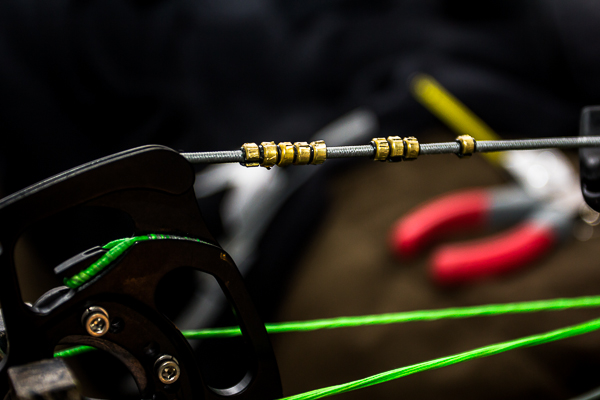
Don’t let their look fool you. These little guys can boost bow speed and performance when applied correctly.
Basically, speed nocks are weighted items, the most common are small brass nock sets that are strategically placed near the top and bottom cams. Other materials you could use are speed balls, eliminator buttons, and speed studs, just to name a few. The weight of the speed nocks in their respectable position will decrease string oscillations and help the string return to the cam track faster, thus enabling a bow to pick up speed. Finding the perfect position that will enable the bow to increase in fps will take time. However, when all is said and done, it is very common for speed nocks to help you gain anywhere from 4-12 fps in arrow speed. Remember, each bow has a sweet spot for where speed nocks should be placed.
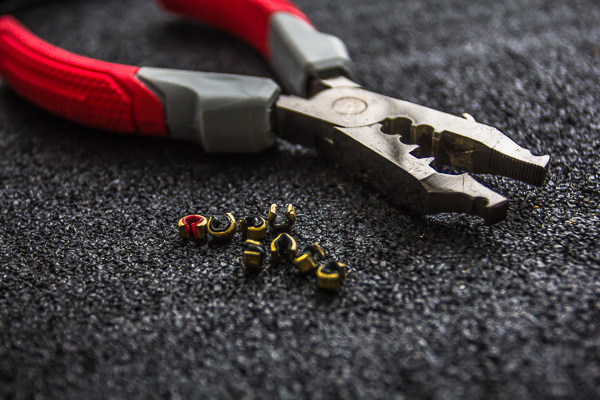
There are no complicated tools required to apply speed nocks to your bow….just a simple dose of patience.
Tools Of The Trade
• Knocking pliers
• Brass nock sets (be safe and buy at least 20)
• Tape measure or digital caliper
• Chronograph
• Target set at close range
• Notebook and pencil
• Bow press
• Heat shrink tubing
• Lighter
Important Notes
Do not go by factory specifications for speed nock locations or recommendations from a friend. A lot of factors go into determining where these speed nocks should be placed, and it varies from one bow setup to the next based on draw length, cam design and orientation, other objects on the string, etc. Some bows react better with more weight, whereas some do better with minimum weight…some bows do better with stacks of weight, while others perform better when speed nocks are split apart…the options are endless.Being patient will help your cause more than rushing through this process. Finding the optimum position for speed nocks takes time, so block out a chunk of your afternoon to start experimenting and having fun. Please note that doing this without a chronograph will most likely do you more harm than good.
Getting Started
Start off by shooting five shots through the chronograph (with the same arrow for consistency) from a distance of 5 feet and record your average fps reading. Be sure to shoot at the same distance away from the chronograph for each shot so you don’t get different readings due to being closer or further away. Get this average reading at each speed nock orientation.
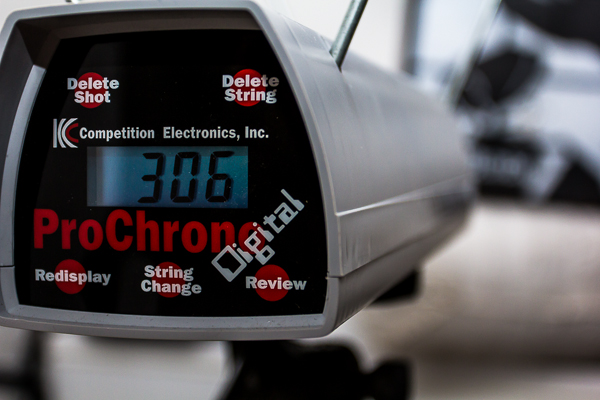
Before adding speed nocks make sure you know the current speed of your bow setup. (pictured here is speed before nocks are applied)
The easiest way to start is by placing a single brass nock at 0.5” from your top and bottom cam. Solo cam bows will typically benefit from the speed nocks being placed near the cam and not the idler wheel. These speed nocks go on the serving, not on the string. Be sure not to place them too close to the cams or they may hit the cams as the cams rotate through the shot just before they are at rest. Crimp them onto your serving so they don’t move and take five shots through the chronograph. Take a note of the speed on average, if it stayed the same or decreased, then un-crimp the brass nocks and move them either closer or further away from the cams and re-shoot through the chronograph.
At this point you should have found a spot on the string that gave you an increase in speed. Next, start by adding one brass nock at a time next to the first brass nock. Shoot and record the speed and then make some movements again if you witness a decrease, if you saw an increase in speed then add another brass nock to this stack and repeat the process.
Slowing Down
After battling with this starting group of brass nocks, you may notice that your speed will level off or it will start to decrease with the addition of more weight. At this point you should return to the brass nock orientation that gave you the highest fps reading and start another group of brass nocks 0.5” away. Start with one on the top and bottom and go through the process again. Once again, if your arrow shot slower, then move them closer or further away from your first group of brass nocks. Repeat until you get a speed increase.
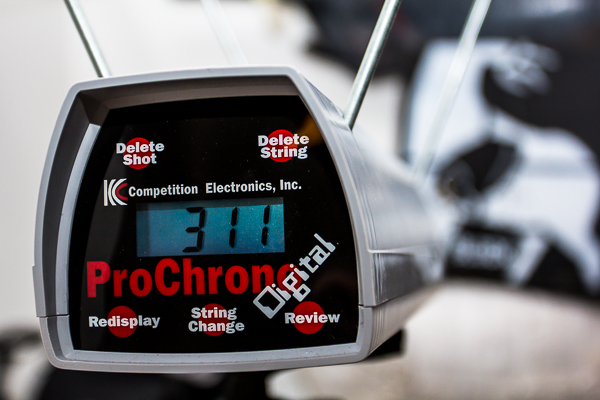
Once you’ve found the optimum speed and nock locations…stop. (pictured here is speed after nocks have been applied)
Sometimes I find that I need to take one of the brass nocks from the first group and place it with the second group to get an increase in speed. It is also a good idea to try more than two groups of brass nock sets as you never know what orientation will give the best outcome. This leap frog method may seem very slow and tedious, but the end result will be worth it. After you find the optimum position for all the brass nock sets, you can place your bow in a press and remove the string and cover the brass nock sets with heat shrink tubing to cover the glare of the brass. Finally, use a lighter to shrink them down to the string serving.
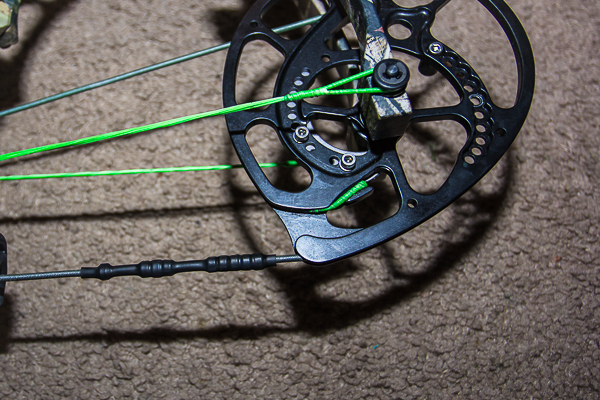
The next time you head afield yo u can do so confident that your bow is performing at peak performance levels.
Conclusion
By now you may be asking if all of this time was worth it for gaining a few fps. The short answer is yes! If you have already started this process, then you are the type of archer that enjoys tuning your setup and figuring out what makes your bow shoot the absolute best it can. So an hour or so of shooting through the chronograph and playing with speed nocks will be beneficial to you. Bow speed is not everything, but sometimes having a few extra fps may help if you misjudge a yardage or are looking at other ways to boost your bow’s performance.






